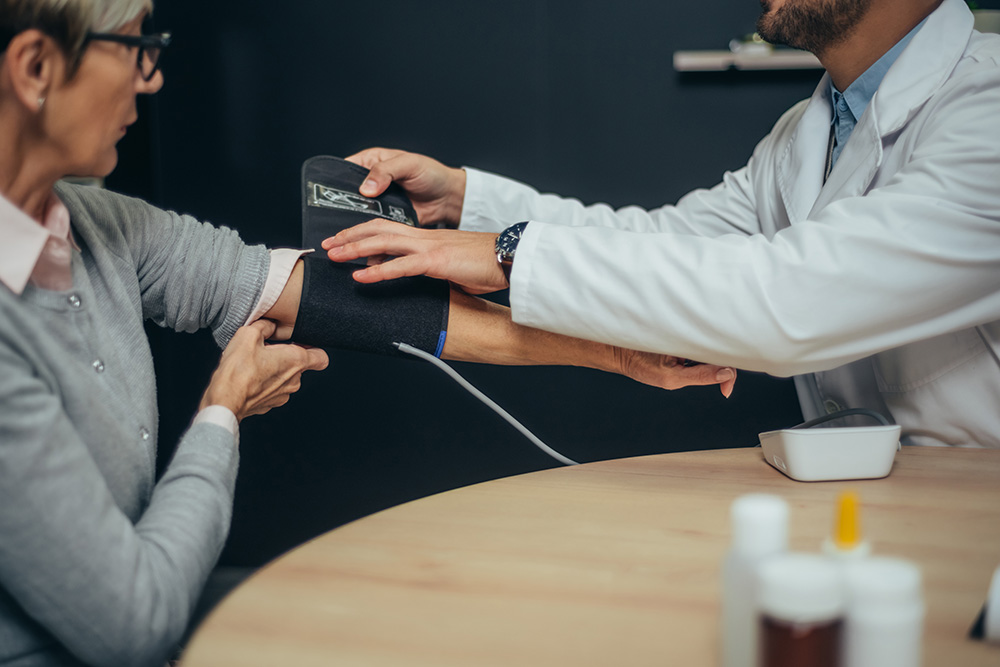Blood pressure readings can be important for older adults. According to the CDC, about 70% of all adults 60 and older in America have high blood pressure. Understanding what your blood pressure readings are can help you better treat your hypertension. Below, we will discuss how to understand your BP readings and how to take it at home properly.
What is Blood Pressure?
BP measures the force that blood pushes against the walls of your arteries as it flows. There are 2 numbers in your BP read as X over Y. The numbers refer to your systolic and diastolic pressures. Systolic pressure is the higher number, which is the force during the heart’s beat. Diastolic pressure is the value of the force between the heart pumps. If your BP is 120/80 (read as 120 over 80), 120 is the systolic pressure, and 80 is the diastolic pressure. The reading is also in mmHg, which means millimeters of mercury.
Getting an Accurate Reading
Before getting a blood pressure reading, refrain from smoking, exercise, or caffeinated beverages for at least 30 minutes prior. If necessary, use the bathroom before a measurement, as a full bladder can affect readings. Sit still and relax for 5 minutes before being measured.
Next, make sure the cuff is the proper size for your arm. A cuff that is too small or too large can affect your measurement. The cuff should be placed just above the elbow, against bare skin. Keep the cuffed arm on a flat surface at heart height. Sit upright and keep your feet flat. Refrain from talking.
It is generally good to consider testing a second time if doing it yourself, just for safety. Then, just average the results. Consider keeping a log of readings. This can be especially helpful for your doctor. Log the time of day, and try to take readings at about the same time each day.
What is a Good Blood Pressure Reading?
Generally, a normal blood pressure reading will be under 120 systolic and 80 diastolic. BP less than 90/60 is indicative of low blood pressure, or hypotension. If your systolic number is between 120 and 129, and your diastolic number is below 80, your pressure is considered elevated.
Systolic numbers ranging from 130-139 or diastolic numbers ranging from 80-89 indicate stage 1 hypertension. Systolic numbers ranging from 140+ or diastolic numbers ranging from 90+ indicate stage 2 hypertension. From there, you are considered in a hypertensive crisis if your blood pressure is higher than 180 systolic and/or 120 diastolic. If so, consult your doctor immediately. Call 911 if you are in a hypertensive crisis and have the following symptoms:
- Chest pain
- Short breath
- Numbness
- Vision changes
- Changes in or slurred speech
- Weakness
Managing Hypertension
Your doctor can help you manage your hypertension in a variety of ways. Firstly, adjust your diet to limit the consumption of salty and fatty foods. A diet rich in fruits, vegetables, good cholesterol, and whole grains can help manage hypertension. Regular exercise and losing weight can also be important. Smoking and excessive alcohol consumption can also raise blood pressure. Therefore, quitting smoking and curbing your drinking can help make significant changes to your BP. Stress relief and getting enough sleep daily can also lower BP. Additionally, your doctor may prescribe medications that can help lower blood pressure.
In-Home Care for Older Adults with High Blood Pressure
While hypertension itself may not be a reason to hire in-home care for an older loved one, your home health aide can assist with easing care to help manage BP. From preparing healthier meals to helping with exercise, there are many ways that an aide can assist your loved one. Your loved one’s aide can also assist with logging BP measurements done at home.
Safe Harbor Healthcare Services does not provide medical, healthcare, or financial advice via articles. This material has been prepared for informational purposes only. It is not intended to provide, and should not be relied on for advice.
Safe Harbor Healthcare Services has provided excellent home care on Staten Island since 1967. Our services help older and disabled individuals live safely and independently; while giving their families the peace of mind they need. For more information contact us or call (718)-979-6900.

